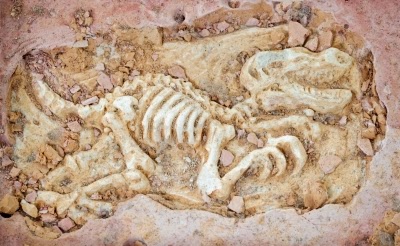Presuppositional Reasoning in China's Jurassic Park
More dinosaur fossils are coming out of communist China. This time, it looks like they are not fakes (like Archaeoraptor, for instance), but there are still absurd interpretations of the facts. In some ways, paleontologists have a treasure trove. But in other ways, they have problems for evolutionary ideas.
Two areas, allegedly millions of years apart in evolutionary time. And not much difference between the fossils. The cladistics people decided that, based on their presuppositions and worldview that evolution is true and that the fossils are millions of years old, well, that means evidence of common ancestry. Of course, they arbitrarily rule out the audacious concept that instead of common ancestry, what they see is evidence of common design by the Master Designer. And feathers? Must not be birds, it must be dinosaurs evolving into birds. Plenty of assumptions, circular reasoning and forcing observations into an ineffective framework going on here.
 |
| Stock image "Dinosaur Fossil" by PANPOTE / FreeDigitalPhotos.net |
China’s famous Cretaceous wonderland in Liaoning Province—the Jehol Biota—is apparently sitting atop a gold mine of similarly well-preserved Middle-Upper Jurassic fossils. A team of paleontologists has just compiled a catalogue of the vertebrate fossils from six sites in this stratum and published the list in the Journal of Vertebrate Paleontology. They suggest the entire group, similar in age and ecology, be henceforth known as the Daohugou Biota. Daohugou is an Inner Mongolian village near the first of these fossil beds to be found. All six of the fossil-rich sites are in northeastern China’s Tiaojishan Formation.
“The Daohugou Biota gives us a look at a rarely glimpsed side of the Middle to Late Jurassic—not a parade of galumphing giants, but an assemblage of quirky little creatures like feathered dinosaurs, pterosaurs with ‘advanced’ heads on ‘primitive’ bodies, and the Mesozoic equivalent of a flying squirrel,” says lead author Corwin Sullivan. Coauthor Yuan Wang adds, “The Daohugou amphibians are crucially important in the study of the phylogeny and early radiation of modern amphibian groups.”You can read the rest at "Thirty Million Years Didn’t Really Change China’s Jurassic Park".